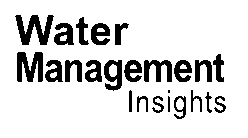In the bustling world of wastewater management, a beacon of innovation shines from the University of Tehran, where researchers are tackling one of the most pressing environmental challenges of our time: the removal of heavy metals from municipal wastewater. Led by Ali Reza Radkhah from the Department of Fisheries at the Faculty of Natural Resources, a groundbreaking review study has shed light on the effectiveness of various adsorbents in purifying urban wastewater, with significant implications for the energy sector and beyond.
Heavy metals, such as lead, mercury, and cadmium, pose severe threats to both human health and the environment. Their presence in wastewater, stemming from industrial processes and urban runoff, demands urgent attention. Radkhah’s study, published in the journal ‘آب و توسعه پایدار’ (Water and Sustainable Development), delves into the potential of different adsorbents to mitigate this issue, offering a glimpse into the future of wastewater treatment.
The research explores a wide array of adsorbents, from natural materials like agricultural waste and fruit peels to advanced nanomaterials. “Natural adsorbents, particularly agricultural residues and biochars, have shown promising results in removing heavy metals from wastewater,” Radkhah explains. These materials are not only economical but also environmentally friendly, making them an attractive option for large-scale applications.
One of the most intriguing findings is the potential of nanoadsorbents. Materials like graphene, iron oxide, and carbon nanotubes have demonstrated exceptional capabilities in capturing toxic metals. However, their high cost compared to traditional adsorbents like activated carbon poses a challenge. “While nanomaterials hold great promise, their widespread use in wastewater treatment is currently limited by economic factors,” Radkhah notes. This observation underscores the need for further research and development to make these advanced materials more accessible.
The energy sector, in particular, stands to benefit from these advancements. Wastewater treatment is a significant energy consumer, and the adoption of more efficient and cost-effective adsorbents could lead to substantial energy savings. Moreover, the removal of heavy metals from wastewater can prevent environmental contamination, protecting ecosystems and reducing the long-term costs associated with pollution remediation.
The study also highlights the importance of scaling up laboratory research to real-world applications. While many adsorbents have shown promise in controlled environments, their performance in actual wastewater treatment plants remains to be fully validated. This gap presents an opportunity for collaboration between academia, industry, and government to bridge the gap between research and practice.
As the world grapples with the challenges of urbanization and industrialization, the need for sustainable wastewater management solutions has never been greater. Radkhah’s research offers a roadmap for developing effective and environmentally friendly adsorbents, paving the way for a cleaner, healthier future. The insights gained from this study could revolutionize the wastewater treatment industry, driving innovation and sustainability in the energy sector and beyond. As we look to the future, the work of Radkhah and his colleagues serves as a testament to the power of scientific inquiry in addressing the pressing issues of our time.
